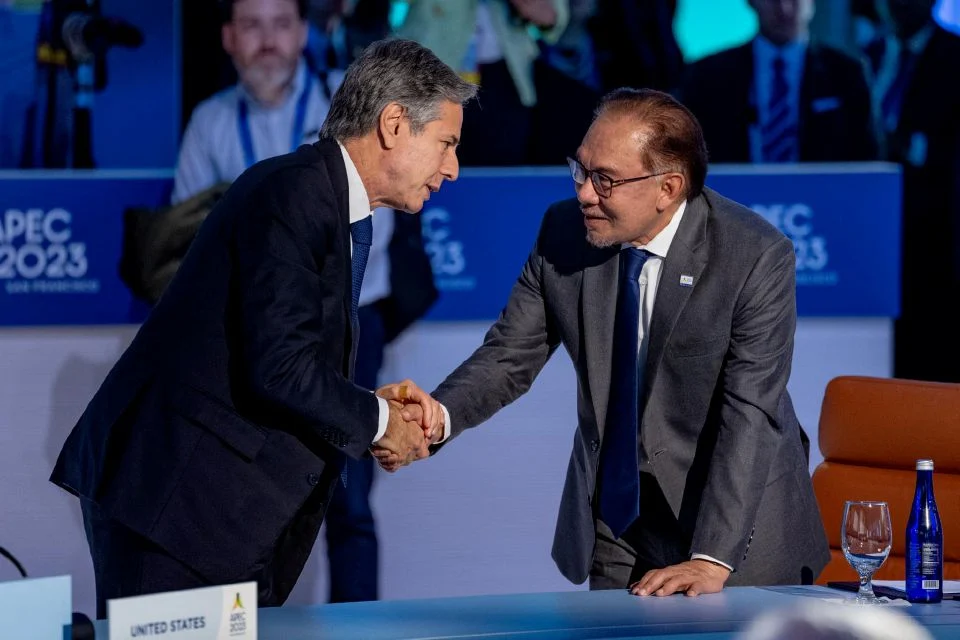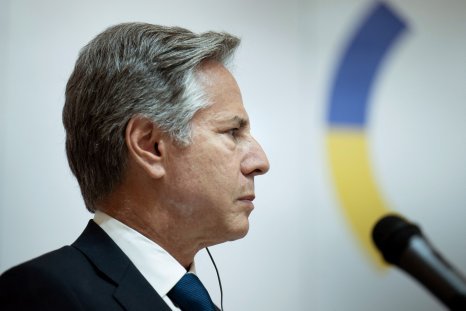
By Collins Chong Yew Keat
KUALA LUMPUR, Malaysia: Malaysia’s participation in the recent APEC Summit has seen the strong stance on the Palestinian issue being projected. In navigating the expected implications on this stance, Malaysia has also reiterated its conventional position on neutrality and firmly and fiercely aligning with its own non-aligned stance and refraining to take a side, and condemning the bloc rivalry and bipolar divide.
Malaysia has for decades adherently stuck to its neutrality stance, with bouts of hedging and balancing in trying to adjust and accommodate the different facets of security architectures and challenges. The rapid changes in regional threats and the prospects of looming high intensity conflicts render this past fixation on this concept to be risky.
The risks of being neutral supersede the risks of taking sides, especially when prospects for conflicts increase and internal deterrent capacity is insufficient. Regional scrambles to shore up assurances and support have seen the likes of Tokyo, Seoul, Manila, Hanoi and Jakarta all ramping up their efforts to bolster their external partnerships and alliances and in maximising returns on their security and defence postures.
Taking a Long Term Principled Stance
The great power shift is not necessarily flowing from West to East, it is a misconception to argue that the West is now on the decline and the future belongs to the East in an Asian century. The long term resilience and strategic fundamentals of the West, especially in a value based approach and a sustainable progressive leadership in hard and soft power dominance and economic and technological spectrum, are enduring and consistent.
Being neutral would only create greater leverage to external powers in seizing upon this to up their carrot and stick approaches and existing measures including economic coercion and potential blackmail and grey zone tactics which have been happening to the region and other countries for years.
A credible and direct deterrent capacity based on external partnership and alliance will transcend beyond the efforts and impact of building one’s own internal hard power capacity, which will take years and decades to be fully impactful.
Even in Asia, there is no single Asian solidarity framework or spirit, it is still fragmented based on historical discord and animosity, and there is no Asean regional spirit either, as it is still divided by mutual mistrust and distrust.
In forming and choosing a trusted and value based partnership, the principles of freedom, rule of law and democracy form the ultimate parameters. From Japan to India, the arch of democracy and adherence to a rules based order is the foundation of a credible, solid and dependable axis of alliance that value mutually beneficial policy returns on trade, investment, resources, supply chain, energy and food security, which will translate into the priority of assured security and defence support in all levels of the field.
New Economic Model Transition
Malaysia is facing a critical crossroads where a strategic and holistic shift and transformation in our economic model, based on high impact and high income and assured long term assurance in a knowledge based and high technology economy, is needed. The US and India have the most favourable demographic and future economic advantage in the long game. New Delhi is already in Malaysia’s top ten trading partners and is projected to be the world’s third biggest economic power by 2028. Both India and the US still have their best years and decades ahead in terms of economic sustainability parameters of a booming and young demographic advantage, and progressive and sustainable scientific and high technology capacity in driving consistent economic tiers and maturity in outcome and returns.
In 2022, the US, Singapore, and Japan contributed to the highest net inflows of foreign direct investments to Malaysia, each amounting to approximately 37.8 billion, 11.3 billion and 9.6 billion Malaysian ringgit respectively. All three represent the pillars of a values-based economic model which is based on trust and track record of consistency and spillover communal impact from the investments.
Staying Power of the West vs Perceived Decline
The US and the West have been wrongly perceived to be in decline, but future trends and prospects hold them to be more advantageous and reliable based on traditionally held values and prospects in demography and economic and technology resilience and maintenance of unmatched strength in hard power and, hold more prospect with future lasting demographic capacity and expanded alliance of allies and high technological advancement with values.
The strength of the US economic power has been very much wrongly perceived and undervalued, and this will prove to be a big strategic mistake for regional players.
Projections of China overtaking the US as the world's biggest economy have faltered repeatedly, first thought to happen in 2018, followed by a revised projection to 2020 and again extended to 2030 and beyond. More analytical arguments and reports have surfaced that it might not happen at all.
The perpetual rise of China and its long term consistency are not inevitable, and the much perceived Western and American decline is not cast in stone. The future is not necessarily being led by the perceived boom of the economy and standing of the Global South or the BRICs, and to ignore the resilient and consistency of the Western led economic framework and bulwark of future growth and returns will be a strategic mistake.
China’s long term economic prospect is declining, and the various current and medium term indicators have been discouraging. The internal structural economic cracks, led by the Evergrande and Country Garden debt crises, the long term demographic crisis with the ageing society and rising youth unemployment and disconnect as mirrored in the tai ping movement where young people are increasingly giving up on their career and dream prospects all create future chain fallout on regional economies, especially in existing projects in the country.
Debt trap from mega BRI projects and potential geopolitical and economic risks as in the examples of the Iskandar Puteri and ECRL create future risks. Malaysia's economic structure must undergo high technology reform and transformation, and can no longer rely on conventional cheap capital and reliance on volume driven capacity.
Quality technology, trust and confidence and reliable structure in key critical sectors including digital and communications network, semiconductors and new energy and green and digital economy must be strategically focused and this involves the reliance on the future of Western technology and economic drive. The Huawei 5G concerns remain a case in point. Value based economy and foreign policy based on rules based order and a free and open Indo Pacific remain critical to Malaysia as a maritime and trading nation, and this involves the need to have strong and credible security and defence capabilities and a solid bulwark of deterrence capacity.
The US and the West currently provide this assurance of defence and deterrence that are vital for Malaysia’s future sovereignty especially in facing the risks in South China Sea and the fallout and chain impact of future Taiwan tensions. Increasing volatility and future uncertainties in South China Sea with a potentiality of greater bellicosity from China which might impact on our oil and gas resources and the potential of economic tool being used as can be seen in the case of Australia and East Europe all provide risks if we are too entangled or in maintaining the perceived need to get the best of both worlds.
Malaysia will have to be wary of being too quick to jump into the bandwagon of de-dollarisation and being overly extensive in the overtures to the Global South or the anti West stance and movement.
Malaysia’s defence needs will still be predominantly pillared on the goodwill and support of the US in times of real conflicts, and our biggest deterrence capacity will still come from the support from the West and traditional allies especially Japan, Middle East and others.
Kuala Lumpur will need to have a strategic long term re-orientation of its economic fundamentals, especially on ensuring a dependable and sustainable external economic dependence.
Malaysia needs a new model of power relations and security and defence bulwark of assurance in the region, and Malaysia is in a strategic position to form a deeper security partnership with critical partners apart from the US particularly Tokyo, Seoul, New Delhi and Canberra.
*Collins Chong Yew Keat is a Foreign Affairs and Security Strategist with Universiti Malaya.*








0 Comments
LEAVE A REPLY
Your email address will not be published